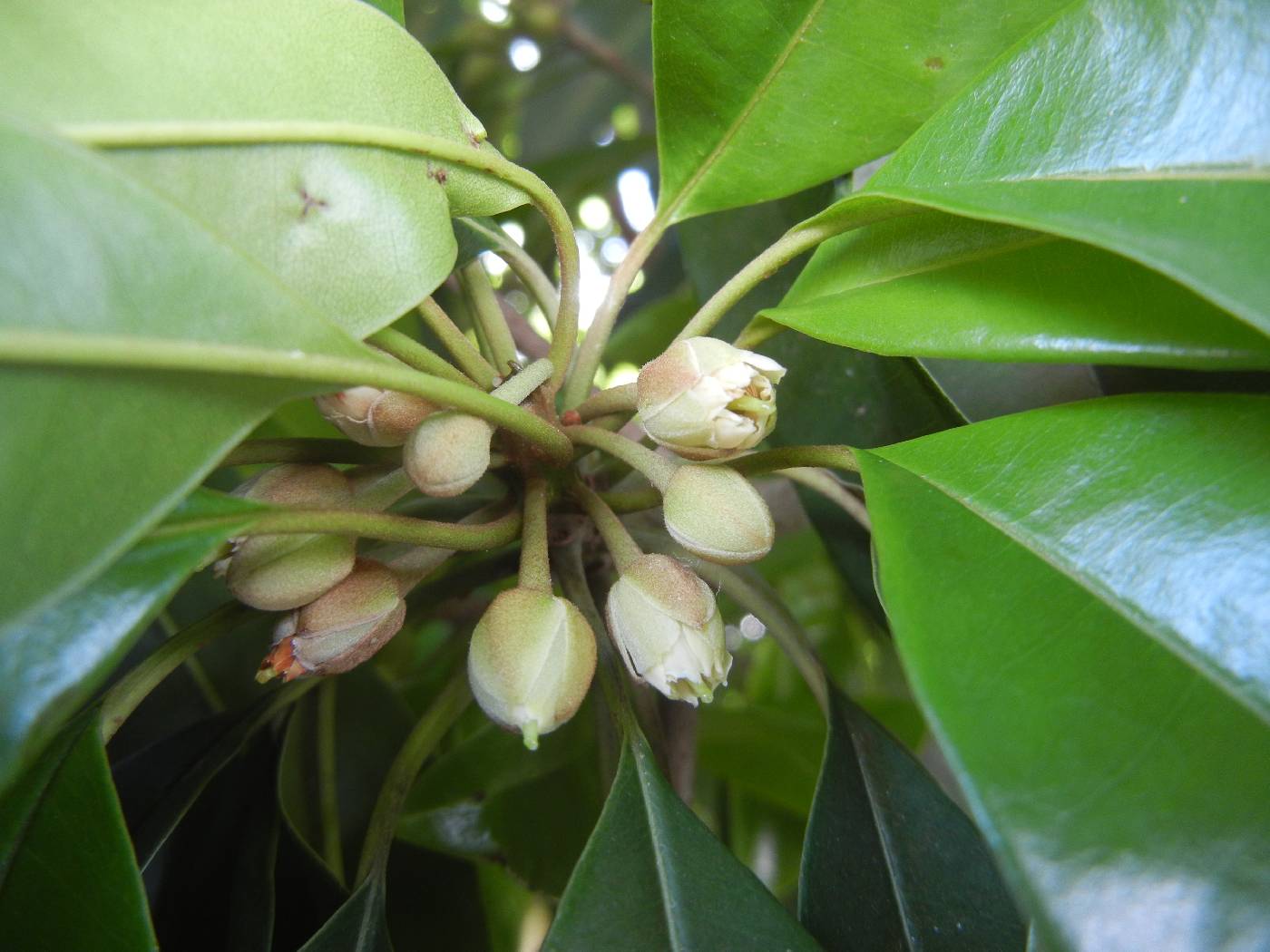
|
Family: Sapotaceae |
Shrubs or trees. Stems not armed, tomentose or glabrous. Leaves persistent, alternate; stipules present or absent; petiole present; blade: base rounded to cuneate, apex retuse to acuminate, surfaces hairy or glabrous. Inflorescences fascicles or solitary flowers. Flowers: sepals 6 in 2 whorls of 3, outer valvate, darker, abaxially densely hairy; petals 6[-9], white or yellow, glabrous or sparsely hairy, lobes undivided, shorter than or exceeding corolla tube; stamens 6[-12], distinct [basally connate with staminodes]; staminodes [absent or 1-]6[-12], alternate with stamens, erect or incurved, petaloid, triangular-lanceolate, glabrous or hairy; pistil 5-12 [-14]-carpellate; ovary 5-12[-14]-locular, glabrous or hairy; placentation axile or basiventral. Berries brown [yellow-green, orange, red, black, or purple], ellipsoid or depressed-globose to subglobose, glabrous. Seeds [1-]2-10, brown, laterally compressed; hilum linear; embryo vertical; endosperm present. x = [12,] 13. Species of Manilkara are used as sources of latex for nonelastic rubber. The wood is dense and hard, useful for bridge pilings (fresh water), wheel spokes, posts, railroad ties, etc. Seed extracts have been used as antihelminthics and in ophthalmics.
|
This project was made possible in part by the Institute of Museum and Library Services [MG-70-19-0057-19].
Powered by Symbiota



